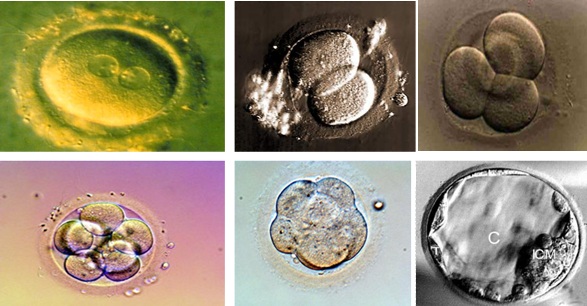Read stories of happy parents
Preimplantation development
The development of the embryo starts several hours after the fertilization. Typically, the first division occurs approximately 16 hours after the fertilization. The fertilized egg (ζυγώτης) is divided into two daughter cells called blastomeres. On the second day of life, the embryo is normally composed of two to four cells, while the third day of life consists of five to eight cells.
The cell embryo stage is followed by the morula stage. At this stage, the embryo consists of about sixteen to thirty-two cells, which form a compact mass. The embryo reaches the morula stage on the fourth day of development.
On the fifth day of preimplantation development, the embryo reaches the blastocyst stage. At the blastocyst stage, the embryo consists of sixty to one hundred and twenty-cells, which form two distinct groups of cells. An outer layer of cells, which forms placenta (πλακούντας), and an intracellular mass that will form the particular fetus.

